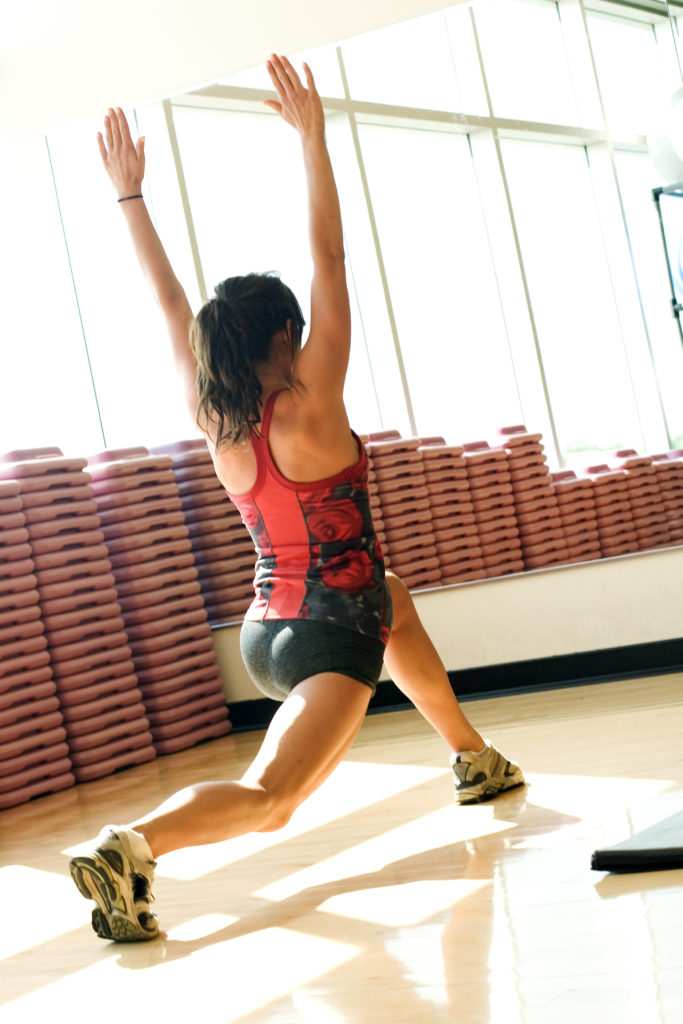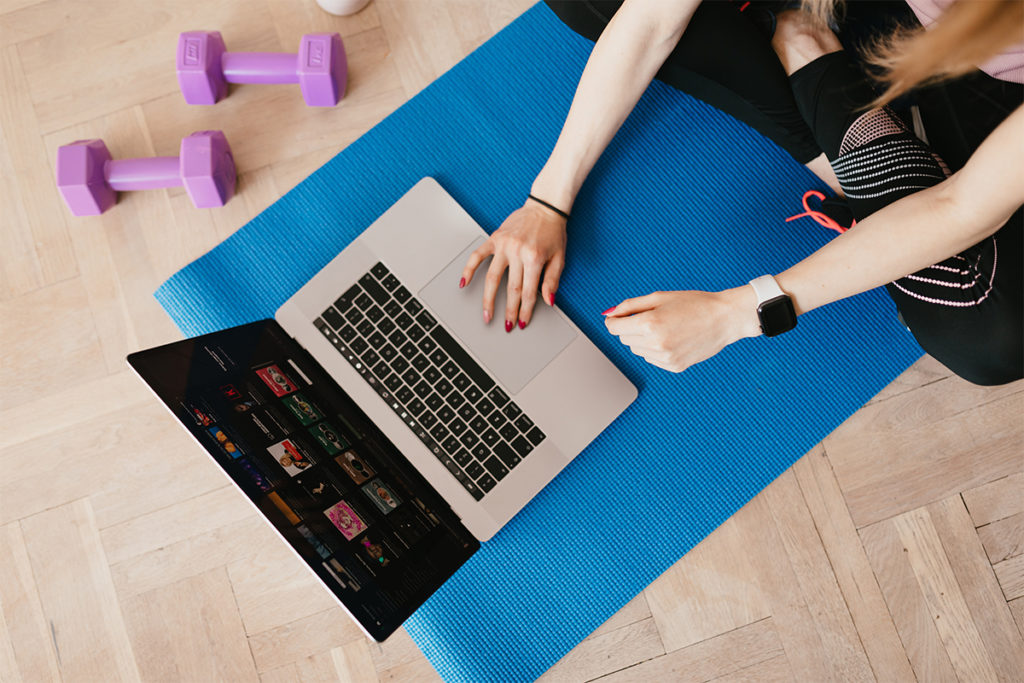Tabata Interval Training: Sample Class

Tabata intervals (named for Japanese researcher Izumi Tabata) are a great example of structured intervals. Tabata training includes a 20-second high-intensity anaerobic work interval followed by a 10-second rest, repeated eight times in a row. In a creative twist on Tabata, this sample workout alternates moderate-intensity intervals with higher-intensity bouts of the same exercise. Three intensity options allow people of different fitness levels to start at different points, while still having a way to progress the pattern. For example, beginners may start at level 1 as their “moderate” intensity and progress to level 2 as their “high” intensity, while fitter participants may start at level 2 and progress to level 3. Students perform the exercises at a fast pace, doing as many repetitions as possible while maintaining proper body alignment and full range of motion. Participants rest briefly (10–20 seconds) between work intervals and repeat each work-rest cycle twice per exercise.
Structured Interval Details
FORMAT: An interval training workout structured as follows:
- 30 seconds’ work at moderate intensity (level 1 or 2, depending on fitness level)
- 10 seconds’ rest
- 20 seconds’ work at high intensity (level 2 or 3)
- 20 seconds’ rest
Repeat immediately with same exercises before continuing to the next interval.
TOTAL TIME: Each exercise takes 2 minutes 40 seconds. A 60-minute class incorporates 10–12 exercises. Balance upper-body, lower-body and cardio intervals for a complete workout.
EQUIPMENT: A resistance tube or other object for jumping over, and a step. Other equipment and exercises can easily be incorporated into this structure.
MUSIC: Play any high-energy music as background.
Warm-Up (10–12 minutes)
An extended warm-up is needed to prepare for a high-intensity interval workout. The warm-up not only helps prevent injury during vigorous exertion; it also allows participants to push themselves to a higher level. Use simple, athletic movements and gradually increase the intensity. Here are some ideas:
- Start with 50 jumping jacks; engage transversus abdominis and keep shoulders depressed.
- Progress to 25 mountain climbers, which are great for engaging core musculature.
- Do 10 pairs of walking lunges to get blood flowing to large leg muscles.
- Finally, perform high-knee jog, moving laterally to right (R) for five steps. Pause on step five with knee held high, chest open and abdominals engaged. Then do same pattern, moving left (L). Steps should be quick, powerful and athletic. Continue for approximately 1 minute.
- Repeat entire warm-up sequence twice before beginning intervals.
Intervals (20–40 minutes)
The sample exercises listed below take approximately 20 minutes to complete, including transition time. Apply the structure to your own creative exercises to lengthen the workout time. See “Format” above for direction.
Sample Exercise 1: Lower Body/Cardio
Equipment. None.
Level 1. Perform side-to-side squats. Step L foot out to L, slightly wider than hip width. Perform full squat. During upward phase, bring L foot back in and place it on floor beside R foot. Repeat squat, stepping out to R side with R foot.
Level 2. Add hop between squats as you switch legs.
Level 3. Touch floor during squat, and add hop between squats as you switch legs.
Sample Exercise 2: Lower Body/Cardio
Equipment. Steps with two sets of risers (or one or three sets of risers, to adjust intensity).
Level 1. Do continuous repeater knees. With step on R side, place R foot on top and raise and lower body weight by flexing and extending through R ankle, knee and hip joints. Keep R heel pressed down onto board, and keep knee safely behind toes. Each time you lower yourself, gently tap floor behind you with L toe, keeping most of body weight on R leg.
Level 2. Add hop every other time you extend R leg, landing and lowering with control on same leg (hop, no hop, hop, no hop).
Level 3. Add hop on every leg extension.
Repeat this sequence on L leg.
Sample Exercise 3: Upper Body
Equipment. None.
Level 1. Do push-ups on knees.
Level 2. Do push-ups on toes. Between each push-up, perform a “jack” by jumping feet out and in.
Level 3: Do continuous push-ups on toes.
Sample Exercise 4: Upper Body
Equipment. Dumbbells and weighted bar (for advanced participants).
Level 1. Perform overhead press with moderate weights (8–12 pounds).
Level 2. Do overhead press with heavy weights (10–15 pounds).
Level 3. Do modified push-press with weighted bar (12–25 pounds). Weight should be too heavy for students to perform regular overhead press at this level of fatigue. Instead, use legs to assist in elevating weight. Arms work in stronger, eccentric phase to lower weight back to shoulder height. (To watch a video of this exercise, go to
www.nsca-lift.org/videos/PushPress/defaultpushpress.shtml.)
Sample Exercise 5: Cardio
Equipment. Exercise tube or other low hurdle. Place tube in straight line on floor beside you.
Level 1. Do lateral single-leg leaps over tube.
Level 2. Perform two-footed lateral jump over tube, fast pace.
Level 3. Do lateral tuck-jumps or squat-jumps over tube.
Cool-Down and Core Work (5–8 minutes)
Instruct students to walk around the room and drink water as their heart rate gradually decreases. Transition them into core work by applying the class structure to their abdominal exercises. Choose exercises with three clear intensity levels, and maintain the interval structure throughout.
Eve Fleck, MS
Eve Fleck, MS, has a master's degree in exercise physiology and is the owner of Gym Without Walls in the Los Angeles area. She teaches exercise physiology at California State University, Northridge, and is a co-author of Growth and Development Across the Lifespan. Eve was a finalist for the 2018 IDEA Fitness Instructor of the Year.





